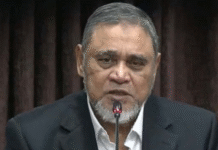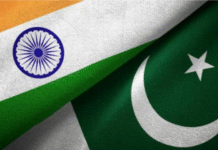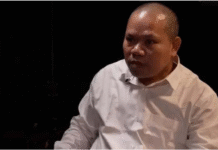Public transport woes: Sufferings of the homebound people

Lost in thought, Shafiul is standing in a long queue at the centre of a crowded area, and staring unmindfully at everyone who walks by. Like many others, he has been waiting for his turn to reach the ticket counter since the crack of dawn. But this is not the story of Shafiul alone; it is the story of every person commuting from Dhaka to their homes to spend Eid-ul-Fitr with their loved ones. Despite Dhaka’s aspirations to become a “smart city,” the metropolitan district continues to lack a decent or well-functioning public transportation system. People moving in and out of the city largely depend on the various public transportation systems available today. But, at this time of the year, getting oneself a ticket to travel to their dear ones is an immensely difficult process. Unfortunately, this is not the end of these sufferings, but rather the beginning. When people travel to their homes outside Dhaka, they face tremendous traffic congestion in the highways connecting the districts, due to the large number of vehicles moving in and out of the city every day.
From past experiences, one can predict that the trains will be affected by hours of schedule disruptions this time, while highway passengers will suffer from delayed buses and traffic congestion, lasting for hours. Whenever a train will arrive, thousands of people will scramble to get into the compartments and catch a seat or find some space. Those who fail to find any room inside the compartments will climb onto the rooftops, risking their lives. On the other hand, passengers travelling by road will mostly suffer on different routes due to long tailbacks at various places and poor road conditions. The ferries carrying buses and other vehicles across the rivers will also face a huge challenge.
Adopting the ramp metering technique will decrease disruption on highway traffic movements. Traffic signal synchronisation is another process that could be beneficial to minimise the pressure on roads by tuning the traffic signals to the time and direction of traffic flows.
With just a day or two remaining before Eid, there must be initiatives to reduce the sufferings of the travellers. The authorities must understand that the number of passengers will only increase as the occasion approaches. They must be well-prepared to handle the rush and ensure a safe journey for all. As such, law enforcers need to be deployed at vital points to prevent any unforeseen accidents. Road Transport and Bridges Minister Obaidul Quader has already extended a gesture of reassurance and stated, “the overall condition of highways is better than previous years.” New bridges and flyovers which opened this year are also bringing an air of relief for the passengers.
During infrastructure construction and upgrading, capacity impairment (fewer lanes, closed sections, etc.) leads to congestion. Automobile-dependent cities around the world use the concept of “ramp metering” by controlling the movement of each vehicle in a congested highway one at a time, rather than monitoring vehicles moving in masses. Adopting the ramp metering technique will decrease disruption on highway traffic movements. Traffic signal synchronisation is another process that could be beneficial to minimise the pressure on roads by tuning the traffic signals to the time and direction of traffic flows. This would be effective if the signals could also be adjusted on an hourly basis to reflect changes in commuting patterns. Any occurrence of road accidents also catalyses the possibility of congestion. Constructive accident management can be achieved by ensuring that vehicles involved in these unfortunate events or mechanical failures are removed as quickly as possible from the roads. It is crucial that these measures be coupled with intensive transport supply improvements. Transportation infrastructure should be expanded to accommodate rapidly growing public transport demands, as the implementation of demand-oriented policies and mechanisms is integral to a sustainable transport system.
Keeping the Sustainable Development Goals (SDGs) in mind, a sustainable transport system needs to be administered—one that will support the mobility needs of the society without damaging the environment or burdening the future generations. Transportation is deemed to be a core component that supports the linkage and development of socioeconomic systems. As a result, we should be concerned about the costs related to initiatives in the transportation system. So transportation must be cost-effective, and capable of adapting to the changing demands of the society.
We need to have more realistic discussions about the cost of implementing policies to better organise the public transport system, balanced against the massive amounts of public money spent in expanding and extending road networks. The envisaged “smart city” can only be achieved if all the issues are addressed in a timely manner. Safe society, stable socioeconomic conditions, and environmental sustainability may bring about the desired outcomes of the 2030 Agenda. A well-functioning transportation system is a crucial step towards fulfilling the “Smart City” dream.
For the time being, we just hope that the endless woes of Shafiul and other travellers will not affect their joy of returning home for this Eid.
Tamanna Hossain is a lecturer at East West University. Email: hossaintumpa@gmail.com









